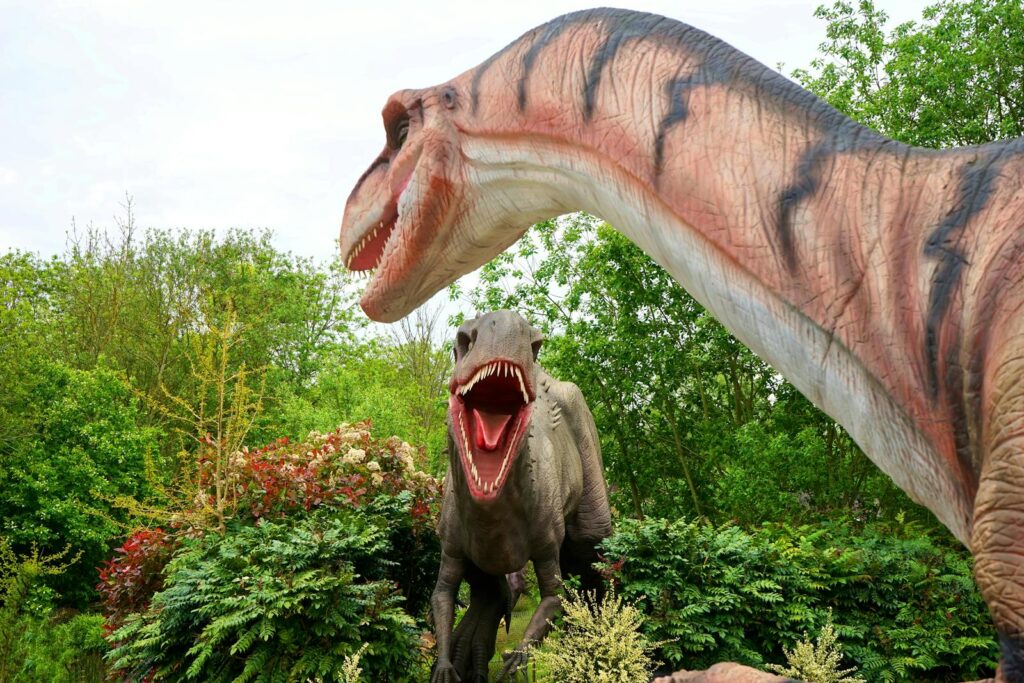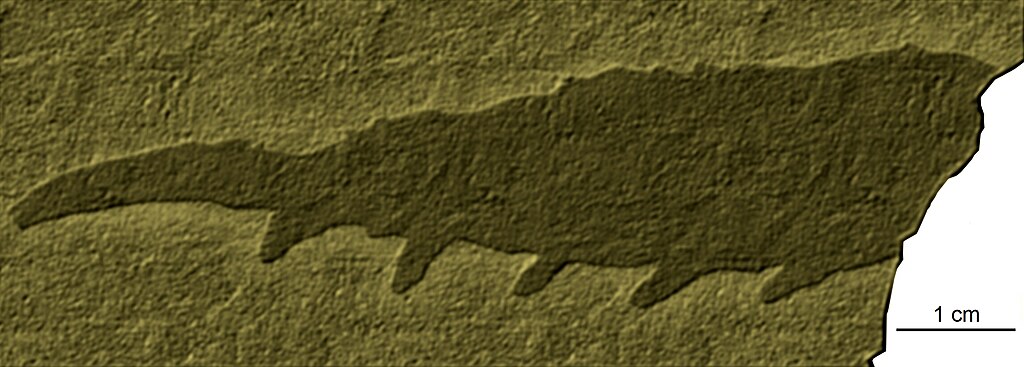Within the golden depths of amber lies a remarkable time capsule of Earth’s ancient past. These gleaming fossilized tree resins have preserved delicate organisms and biological materials with extraordinary detail for millions of years, offering scientists unprecedented glimpses into prehistoric ecosystems. Unlike traditional fossils that typically preserve only hard tissues like bones and shells, amber captures soft tissues, colors, and even cellular structures, providing a three-dimensional window into life forms that would otherwise have vanished without a trace. From perfectly preserved insects and plant fragments to rare vertebrates and microorganisms, amber specimens represent frozen moments in time, offering invaluable insights into evolutionary history, ancient biodiversity, and past environmental conditions that shaped our planet.
The Origin of Amber: Nature’s Time Capsule
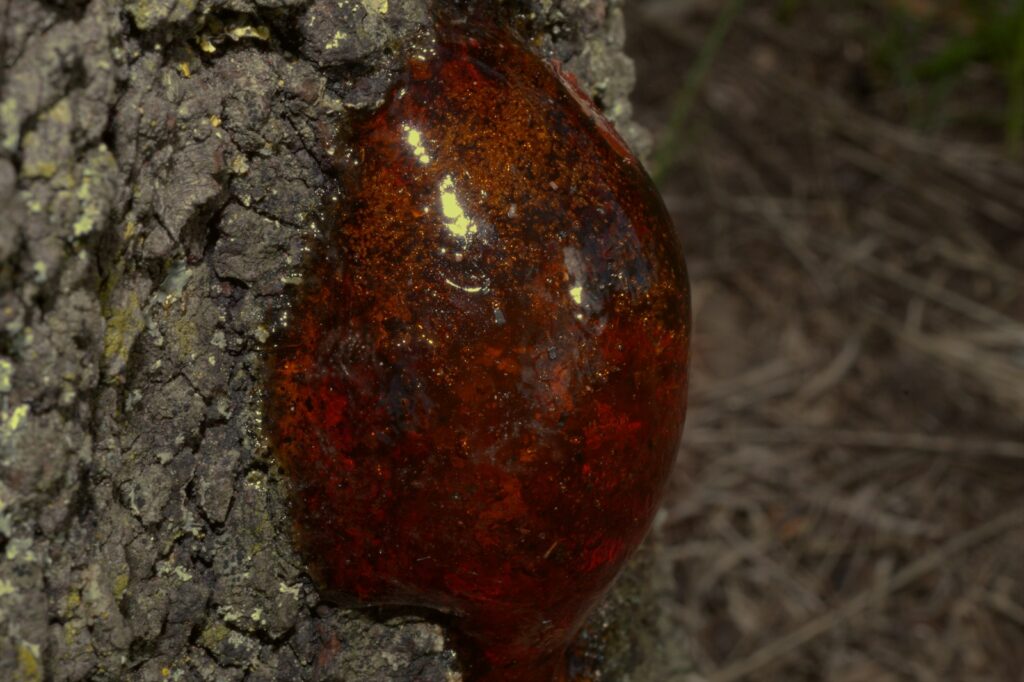
Amber begins its journey as resin, a sticky substance produced by trees primarily as a defense mechanism against insect attacks and to heal wounds in their bark. This viscous material flows down trunks and branches, sometimes ensnaring unfortunate organisms that come into contact with it. Unlike regular tree sap, which is primarily water-based and circulates nutrients, resin contains complex organic compounds called terpenes that give it antibacterial and preservative properties. Through a process spanning millions of years, this resin undergoes polymerization and hardening, transforming through intermediate stages known as copal before finally becoming the durable, gemlike substance we recognize as amber. The geological conditions must be precise for this preservation to occur—the resin needs to be buried in sediments that protect it from oxidation and degradation while applying the right balance of pressure and temperature over millennia.
A Global Phenomenon: Major Amber Deposits

While amber is found worldwide, certain regions boast particularly significant deposits that have contributed enormously to our scientific understanding. The Baltic region of northern Europe contains the world’s largest known amber deposit, formed approximately 44 million years ago during the Eocene epoch from the resin of extinct conifer trees. Dominican amber, roughly 25 million years old, provides an exceptional record of tropical forest ecosystems in the Caribbean region, with a remarkable diversity of preserved insects. Myanmar’s Burmese amber has gained scientific prominence as one of the oldest commercially available ambers, dating back to the mid-Cretaceous period, approximately 99 million years ago,and containing numerous fossils from the age of dinosaurs. Other notable deposits include Ukrainian amber, Lebanese amber dating to approximately 130 million years ago, and Canadian amber from Alberta that represents the northernmost amber deposit in North America. Each deposit offers a unique snapshot of its particular time period and local ecosystem, creating a global patchwork of preserved prehistoric life.
The Remarkable Preservation Process

The extraordinary preservation quality of amber results from a unique combination of physical and chemical factors that occur immediately upon entrapment. When an organism becomes engulfed in fresh resin, the sticky substance rapidly seals it from oxygen and bacteria that would normally cause decomposition. The resin’s natural antibacterial and antifungal compounds further prevent microbial degradation of the trapped specimen. Water is gradually drawn out of the organism’s tissues through a process akin to mummification, while the resin’s acidic components help preserve cellular structures by denaturing enzymes that would otherwise break down tissues. As the resin hardens, it creates an airtight, chemically stable environment that protects the enclosed specimen from external environmental changes. The subsequent fossilization process transforms both the resin and its inclusions, with minerals sometimes replacing original organic materials while maintaining their structural integrity. This combination of immediate preservation and long-term stability explains why amber fossils often reveal microscopic details like cellular structures, muscle fibers, and even color patterns that are rarely preserved in other types of fossils.
Insects in Amber: A Window to Ancient Arthropod Life
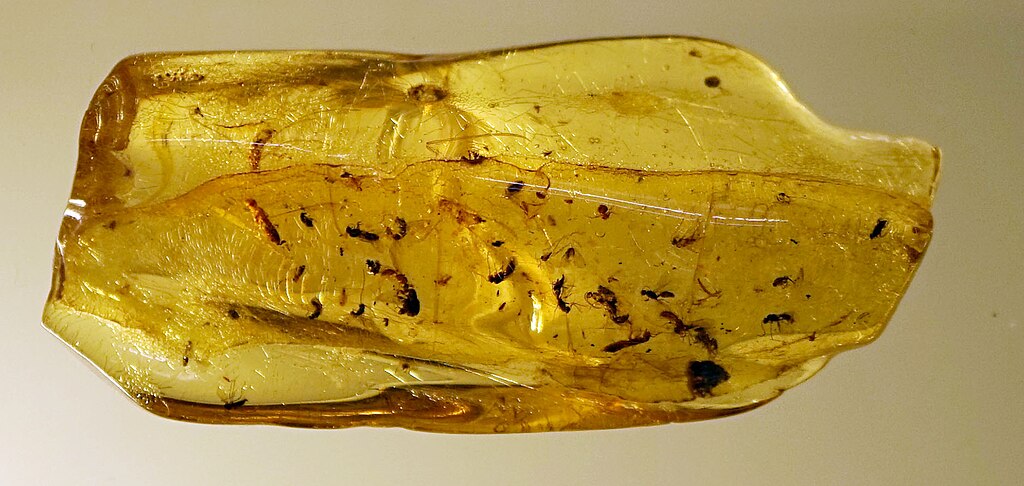
Insects represent the most abundant and diverse organisms preserved in amber, offering unprecedented insights into the evolution and ecology of these arthropods. The amber record has revealed extinct lineages alongside ancestors of modern insect groups, documenting both dramatic evolutionary changes and remarkable morphological stability across millions of years. Scientists have discovered blood-filled mosquitoes that fed shortly before entrapment, bees covered in pollen grains indicating their feeding habits, and ants engaged in social behaviors that mirror those of their modern descendants. Some amber pieces contain mating pairs of insects, providing direct evidence of reproductive behaviors that would otherwise be impossible to document in the fossil record. Beyond their taxonomic importance, amber-preserved insects serve as ecological indicators, helping scientists reconstruct ancient food webs, plant-pollinator relationships, and parasite-host dynamics. The three-dimensional preservation allows researchers to study fine anatomical details like wing venation patterns, mouthpart structures, and sensory organs with a level of precision unattainable in compressed fossils found in sedimentary rocks.
Vertebrate Findings: Rare Glimpses of Ancient Backboned Animals
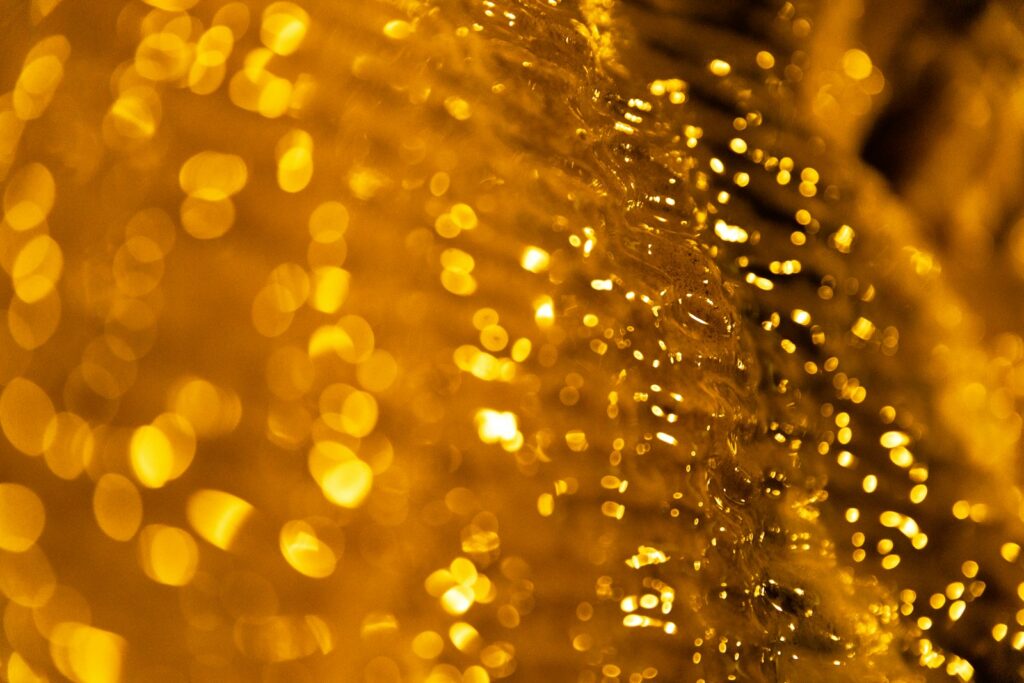
While far less common than insect inclusions, vertebrate remains in amber represent some of the most scientifically valuable discoveries in paleontology. Among the most extraordinary findings are portions of dinosaur remains, including feathers that have revolutionized our understanding of the connection between dinosaurs and modern birds. In 2016, scientists described a remarkably preserved dinosaur tail segment complete with feathers in 99-million-year-old Burmese amber, providing direct evidence of feather structure and arrangement in a non-avian dinosaur. Small lizards and frogs occasionally became trapped in resin, offering unprecedented preservation of their soft tissues and skin textures that would typically decompose before fossilization in other contexts. Amber has also preserved ancient mammals, with finds including tiny shrew-like creatures and even primate specimens that help fill gaps in our understanding of mammalian evolution. These vertebrate inclusions often preserve delicate structures like external ear tissues, tongue details, and even the arrangement of scales and fur that would be lost in conventional fossils, providing paleontologists with a more complete picture of these animals’ appearances, adaptations, and evolutionary relationships.
Plant Life Captured in Resin
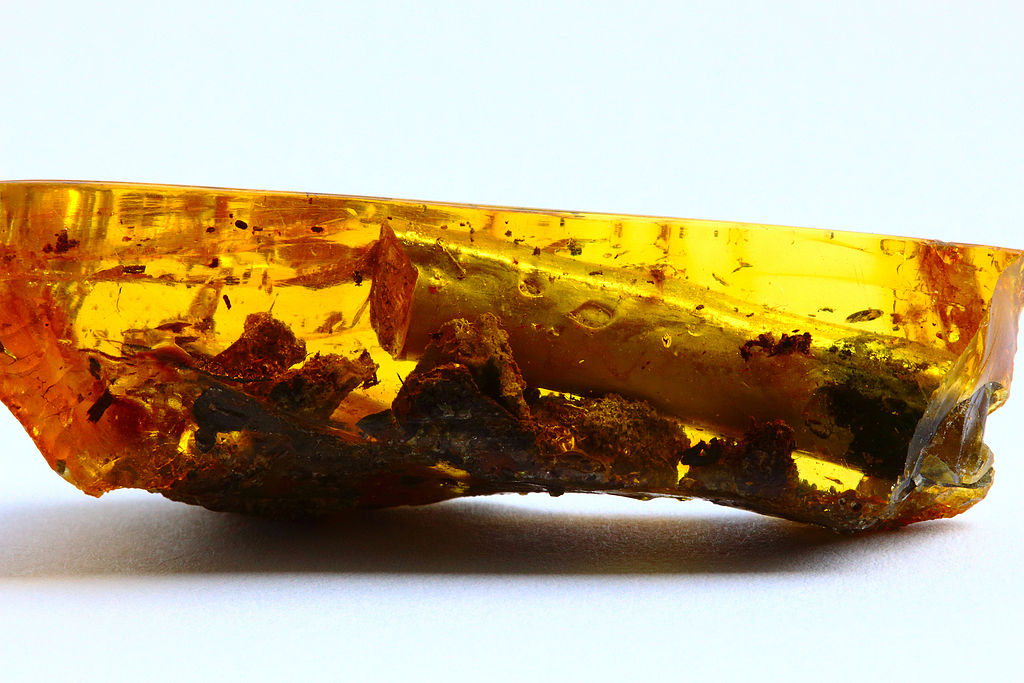
Botanical inclusions in amber provide invaluable documentation of ancient plant communities, complementing the often fragmentary plant fossil record preserved in rock. Delicate flowers captured in amber retain their three-dimensional structure and sometimes even their original colors, allowing botanists to study ancient reproductive structures with unprecedented detail. Pollen grains preserved in amber can be examined under microscopes to identify plant species that may be entirely absent from the conventional fossil record, expanding our knowledge of past biodiversity. Leaf fragments often show fine venation patterns, stomatal arrangements, and even evidence of plant diseases or insect damage, offering insights into ancient plant physiology and ecological interactions. The resin itself provides direct chemical and physical evidence of the parent trees that produced it, with different amber types containing distinctive chemical signatures that help identify extinct tree species. By combining these plant inclusions with the preserved insects and other organisms in the same amber deposits, scientists can reconstruct entire ecological communities, understanding which plants and animals coexisted and how they interacted in environments that vanished millions of years ago.
Microscopic Marvels: Bacteria, Fungi, and Microorganisms
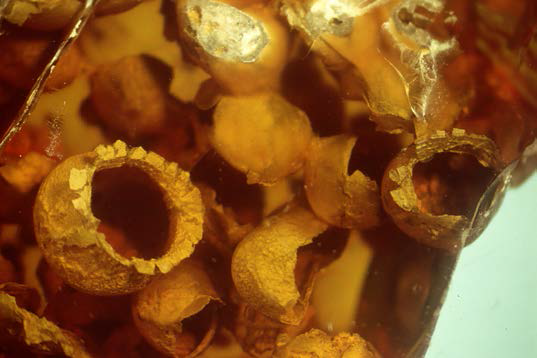
The preservative power of amber extends to the microscopic realm, capturing single-celled organisms and microbial communities that offer glimpses into the most fundamental levels of ancient ecosystems. Researchers have identified various fungi in amber, including reproductive structures like spores and fragments of mycelium that document ancient fungal diversity. Bacterial colonies have been observed on the surfaces of other inclusions or suspended within the amber matrix itself, providing evidence of microbial activity in prehistoric environments. Biofilms—complex communities of microorganisms attached to surfaces—have been discovered preserved in extraordinary detail, showing how multiple microbial species interacted in ancient ecosystems. Perhaps most remarkably, scientists have reported finding viable bacterial spores in amber that may have remained dormant for millions of years, though such claims remain highly controversial in the scientific community and require rigorous verification. The study of these microinclusions requires specialized techniques, including electron microscopy and advanced imaging methods to visualize organisms only a few micrometers in size, representing one of the most technically challenging frontiers in amber research.
Reconstructing Ancient Environments

The collective analysis of all organisms preserved within amber from a particular deposit allows scientists to reconstruct entire paleoecosystems with remarkable detail. By identifying the specific plants, arthropods, vertebrates, and microorganisms present in amber samples, researchers can piece together complex ecological webs that existed millions of years ago. The presence of certain indicator species can reveal precise climate conditions—for instance, tropical insects suggest warm temperatures, while certain fungi might indicate humidity levels. Evidence of plant-insect interactions, such as leaf-mining traces or pollination structures, documents ecological relationships that would be impossible to determine from conventional fossils. Marine organisms occasionally found in coastal amber deposits help scientists understand the boundaries between terrestrial and aquatic ecosystems in the past. By comparing amber biota from different time periods and geographical regions, paleoecologists can track how ecosystems responded to major environmental changes, including climate shifts, continental movements, and mass extinction events. This holistic approach to amber research provides some of our most vivid and comprehensive pictures of prehistoric environments, offering insights into ecosystem function and stability that inform modern conservation biology.
DNA and Biochemical Preservation: Fact vs. Fiction

The potential preservation of ancient DNA and biomolecules in amber has generated both scientific excitement and popular misconceptions, most famously depicted in the “Jurassic Park” franchise. While amber does provide exceptional preservation of physical structures, the reality of biomolecular preservation is considerably more complex than fictional portrayals suggest. Studies claiming to have extracted and amplified DNA from amber-preserved organisms have faced significant scientific scrutiny, with most reports failing to withstand rigorous authentication protocols that exclude modern contamination. The fundamental challenge is that DNA naturally degrades over time through processes that even amber’s protective environment cannot completely halt, with theoretical limits suggesting DNA becomes unrecoverable after approximately one million years under ideal conditions. More promising are studies of other biomolecules with greater stability, such as proteins, pigments, and structural compounds like chitin, which have been more reliably detected in amber inclusions. Modern analytical techniques, including mass spectrometry and synchrotron imaging, are providing new approaches to identify authentic biomolecular remnants in amber without the amplification steps that risk contamination. While “de-extinction” of amber-preserved species remains firmly in the realm of science fiction, the biochemical information obtainable from amber continues to expand with technological advances.
Scientific Methods: Studying Amber Inclusions

The examination of amber fossils requires specialized techniques that balance the need for detailed observation with preservation of these irreplaceable specimens. Non-destructive imaging technologies have revolutionized amber research, with micro-computed tomography (micro-CT) scanning allowing scientists to create detailed three-dimensional models of inclusions without damaging the amber. These digital representations can reveal internal structures hidden from external view and allow researchers worldwide to study specimens virtually. For cases requiring direct access to the inclusion, carefully planned dissection may be performed, with amber cut and polished using specialized tools to expose specific parts of a specimen for closer examination. Researchers sometimes employ techniques from materials science, including infrared spectroscopy and nuclear magnetic resonance, to analyze the chemical composition of both the amber matrix and its inclusions. Synchrotron radiation-based techniques at specialized research facilities can detect trace elements and molecular structures at microscopic scales, revealing details about ancient biology impossible to observe with conventional methods. The most valuable amber specimens undergo multidisciplinary analysis, with experts in entomology, botany, vertebrate paleontology, and microbiology collaborating to extract maximum scientific information from each precious time capsule.
Cultural and Commercial Significance
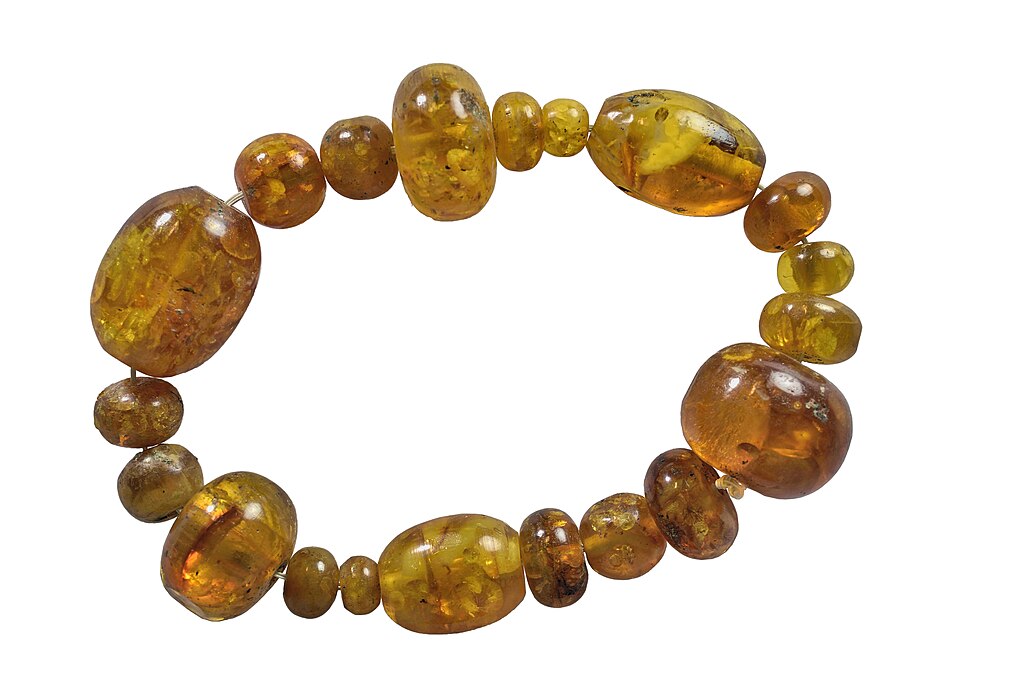
Beyond its scientific importance, amber has held profound cultural significance throughout human history, valued for its beauty, supposed mystical properties, and rarity. Ancient civilizations from the Baltic to China incorporated amber into jewelry, religious artifacts, and medicine, with amber trade routes spanning continents thousands of years before modern globalization. The Romans particularly prized amber, believing it contained the solidified rays of the setting sun, while Baltic peoples associated it with divine tears shed into the sea. This cultural fascination continues today, with amber featuring prominently in jewelry markets worldwide and commanding premium prices when it contains visible, well-preserved inclusions. The commercial value of amber has created tensions between scientific and commercial interests, particularly in regions where newly discovered amber deposits face intensive mining without adequate scientific documentation. The amber market has also confronted issues with forgeries, where modern insects are artificially embedded in polymer resins or genuine amber is modified to enhance its appearance. Ethical amber collection and research now emphasize sustainable practices that balance legitimate commercial interests with scientific access and the preservation of geological heritage sites that contain these irreplaceable windows to the past.
Conservation Challenges and Ethical Considerations

The scientific value of amber fossils faces numerous threats that highlight the need for comprehensive conservation strategies and ethical frameworks. Illegal mining operations in amber-rich regions like Myanmar have destroyed geological contexts crucial for scientific interpretation, while sometimes funding conflict and human rights abuses, raising ethical concerns about amber acquired from these sources. Many important amber specimens disappear into private collections without scientific documentation, effectively removing them from research access and creating gaps in our understanding of ancient ecosystems. The commercial value of exceptional inclusions can make them prohibitively expensive for museum acquisition, limiting their availability for comprehensive scientific study. Amber is also physically vulnerable, with exposure to oxygen, ultraviolet light, and temperature fluctuations causing degradation of both the amber matrix and its biological inclusions over time. Museums and research institutions have developed specialized conservation protocols, including climate-controlled storage, oxygen-free display cases, and digital documentation methods to preserve amber specimens for future generations. International collaborations between scientists, commercial collectors, governmental agencies, and local communities represent the most promising approach to ensuring that amber’s scientific value is maximized while respecting legal, ethical, and conservation considerations.
Future Frontiers in Amber Research
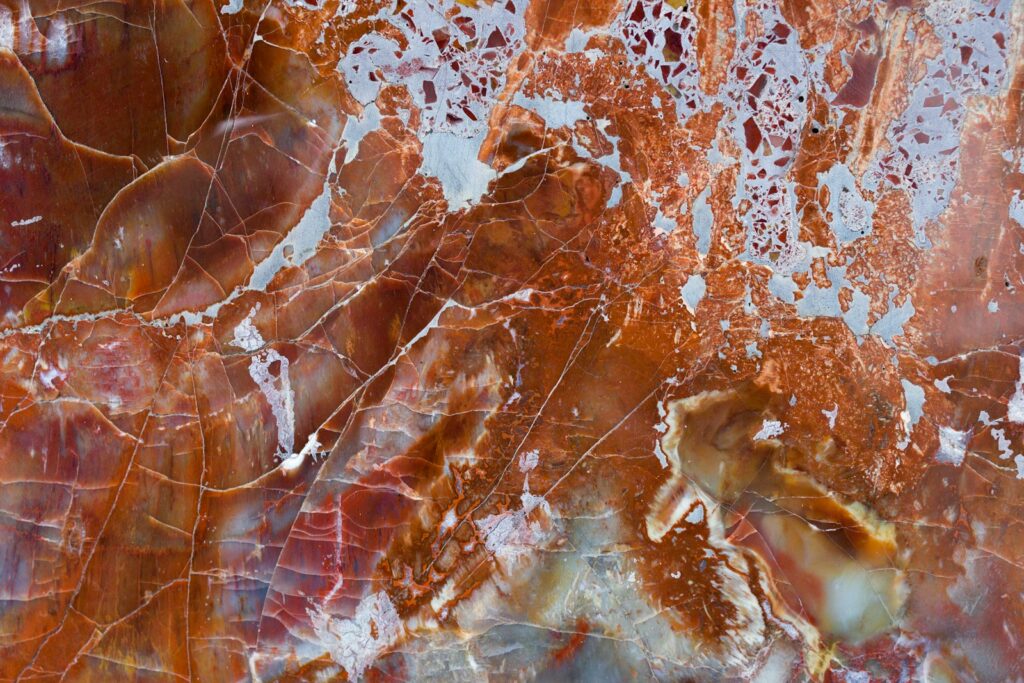
The study of amber continues to evolve with technological innovations opening new research frontiers that promise to deepen our understanding of Earth’s past. Advanced imaging technologies, including synchrotron-based phase-contrast imaging and nano-CT scanning, are enabling visualization of amber inclusions at previously impossible resolutions, revealing cellular and subcellular structures preserved for millions of years. Developments in proteomics—the study of ancient proteins—offer alternatives to DNA analysis, potentially allowing identification of organisms and evolutionary relationships through more stable biomolecules. Paleontologists are increasingly integrating amber data with other fossil records and geological evidence to create comprehensive reconstructions of ancient ecosystems across multiple preservation types. Climate scientists have begun using amber chemistry as a proxy for atmospheric conditions, analyzing carbon isotope ratios and chemical compositions to understand ancient carbon dioxide levels and climate patterns. Amber deposits from little-studied regions, including newly accessible sites in Africa and Asia, promise to fill significant geographical gaps in our understanding of past biodiversity. Perhaps most importantly, amber research increasingly bridges multiple scientific disciplines, with paleontologists, entomologists, botanists, microbiologists, geochemists, and climate scientists collaborating to extract the maximum information from these extraordinary time capsules of Earth’s history.
Conclusion: Amber’s Enduring Scientific Legacy

Amber stands as one of nature’s most extraordinary archives, preserving life forms and ecological relationships with a fidelity that continues to astound researchers centuries after scientific inquiry into these golden time capsules began. The specimens entombed within fossil resin provide irreplaceable snapshots of evolutionary history, documenting both familiar ancestors of modern species and entirely extinct lineages that would otherwise be unknown to science. As analytical techniques continue to advance, each amber inclusion potentially holds answers to questions we have not yet thought to ask about Earth’s biological past. Beyond their scientific significance, these preserved moments from ancient forests evoke profound wonder and connection to deep time, reminding us that our modern world represents just one frame in an ongoing planetary story spanning hundreds of millions of years. In a time of accelerating biodiversity loss and environmental change, amber’s record of past ecosystems offers valuable perspectives on evolution, extinction, and resilience that may inform conservation efforts in our rapidly changing world.

